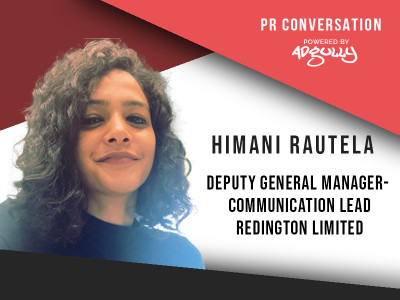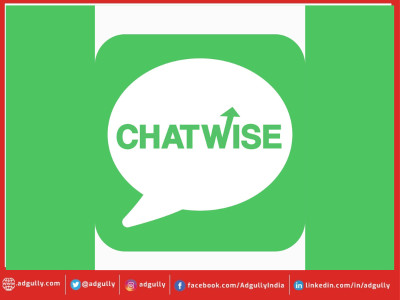PR will become more data and AI driven: Sujit Patil, Godrej Industries
As part of our latest series on ‘PR Conversation’, we at Adgully are speaking to some of the industry leaders from both PR agencies and the corporate communications world about how PR as a business and communication tool has evolved and grown over the years. In the last 10 years, PR has taken a different dimension, especially after the entry of social media in a big way. While the PR business has grown, some of the challenges that the industry is facing have also multiplied as clients are becoming more demanding and are expecting their consultants to be on their toes to manage their brand reputation, as news today travels fast and clients are expecting quick response and action in case of a crisis situation.
Also read: I see more consolidation in the agency ecosystem: Ameer Ismail
In conversation with Adgully, Sujit Patil, VP & Head - Corporate Brand and Communications, Godrej Industries Limited & Associate Companies, speaks about how PR has evolved over the years, the growing importance of AI and data analytics in today’s communications ecosystem and much more.
How has PR evolved in the last 10 years? Going forward, how will the industry shape up as the dynamics of the PR is changing with the acceleration of digital?
I feel the role of PR has evolved significantly in the past five years as compared to the previous several decades. The advent of new media and technology has transformed the way communication happens. The modes, the platforms, the processes have seen a large transformation. However, one thing that will probably never change is the fact that “storytelling” still remains the basis of PR and corporate communications. The advent of new media has just given us more avenues to reach our audience. Today, professionals know the importance of being more perceptive to emotions, experiences and moments, and are ditching the idea that any publicity is good publicity. For the first time, digital has offered PR professionals real-time, bi-directional channel of communication. Thus, brand monologue is giving way to dialogue with target audience.
Today, PR and communications is seen by many serious corporates as a strategic function and the expertise is sought during business planning. PR has made its transition from a broadcast model to that of being an engagement and experience driven model that spans across POEM (paid, owned, earned media). With influencer economy making strides, experience and engagement have emerged as the dominant currencies.
Authenticity and transparency is a given today, since people are quick to point out errors of omission, commission, and opportunism. Today, PR practitioners are equipped and expected to tell the organisational story as it evolves and create genuine dialogues around it – and all this in real time.
Digital has enabled this well.
Going forward, it is more and more evident that PR professionals will find themselves increasingly doing work that transcends the traditionally rigid boundaries of earned, owned, or paid media. Before many realise, PR will become more data and AI driven. In the future, PR practioners will use data to understand situations and strategise more effectively. AI will become instrumental in experimenting with content and headlines, and also predicting the result of the pitch! AI driven journalism has already started making baby-steps, communication will not remain at bay for long. However, this will never replace human intervention; just the role of a PR professional will evolve.
The pandemic has disrupted everyone. In these times, how have you managed the expectations from your PR agency? Did you redefine your objectives to them and revisited your deliverables?
I prefer to have a more optimistic approach to challenges, and by far the pandemic has been one of the most testing one for the industry. When the pandemic hit us, it brought the industry to a momentary halt. It made brands and consultancy go back to the drawing board and prioritise. The biggest questions were: What defines us? What is a priority? Brands and consultancies who could answer these two questions have emerged stronger.
We worked with our PR consultancy to underline the key objectives, deliverables and various mediums through which we can achieve them. Our objective has always been to create a strong connect with our audience and the society at large. Focus was shifted from on-ground to more online communications. Lot of learning and unlearning happened, new metrics were evolved and I think a good collaborative effort along with the agency has helped maintain the overall share of voice in media. A pandemic isn’t the time to be opportunistic and, therefore, all our efforts have been around building authentic relationships with our audience and stakeholders.
Today, artificial intelligence and data analytics are becoming very important in marketing and communication. How are you making use of this to help in your overall messaging and achieving your ROI?
Data analytics enables organisations take informed decisions, today. For effective communication strategy, you must deliver the right message to the right audience at the right time, through the right platform. Data-analytics is helping us sharpen our media strategy. For instance, ORM (Online Reputation Management) tool enables us to dissect insignificant and significant social media responses based on sentiment analysis once an incident is recorded. It also helps us to differentiate between an incident and crisis.
Our monthly communication dashboards on qualitative and quantitative parameters for about 12 business clusters vis-à-vis identified peer sets helps us course correct our PR efforts in line with our overall objectives. The data helps identify markets where we are weak, where in-depth communications are required and many other aspects that help maintain a fair share of voice and admiration for the brand.
AI is all about data, colossal amount of data mining, cognification of data and picking up patterns to predict the next steps! If data is correct, decisions cannot be wrong. So, at a very base level, with AI around, PR professionals would be able to avoid guess work and decide basis data; when to launch a campaign, which region to pilot it, whom to engage with and may be throw up names of relevant and the most appropriate influencers to work with!
Use of communication technology tools fused with data-analytics and AI will increase in the future.
PR measurement and effectiveness of PR has always been a subject of debate. As a PR professional, what steps the PR industry should take to bring in uniformity so that everyone speaks one language when it comes to PR measurement?
Since 2018, we have stopped using the traditional AVE to judge the effectiveness of a PR campaign. Similarly, ROI is a limiting and an unfitting term in the PR parlance. Therefore, PR industry must embrace ROO – return on objectives to align communications to organisational objectives.
PR is a very dynamic process, involves multiple variables and most often outcomes cannot be predetermined with a high level of confidence. Parameters like perceptions, brand loyalty, feelings, engagement, etc., are best measured qualitatively.
So apart from the qualitative analysis of the news clips, Share of Voice vis-à-vis identified competition set, key message delivery, appropriate audience and priority market segmentation, coverage in specific genre of media and endorsements by stakeholders are some more measures that can lead to an informed change in PR strategy.
I feel the best way for a PR function to create and showcase value is to align its strategy to the top organisational goals, articulate business/ brand related PR objectives in line with this strategy, set the expectations right with the C-suite by jointly agreeing on the objectives and measures of success and then go all out to ensure that the objectives are met, hence demonstrating maximum ROI.
A good approach for this could be to set clear PR objectives aligned to the corporate goals. These could be in addition to the regular qualitative and quantitative goals. Worked out in conjunction with the business leaders, they become co-owned and get tracked regularly. Understanding of the overall corporate/ business goals and figuring out how PR can help fulfil them also puts PR in the strategic zone. The focus then shifts towards outcomes and not outputs of the PR team.
Getting the right skillset and training has always been a challenge in the PR profession. What is your view on the same and what would be the valuable tips that you would like to give to the budding young professionals?
Look beyond the traditional skillset. A PR role is very dynamic in nature; it evolves with time. The core objective of the budding PR professional should be to understand business, develop storytelling skills and to keep themselves relevant to the evolving communication landscape. Invest your first three years in working with mentors to learn the nuances of the why, when and how of things. Academic understanding has to be supplemented with experience-driven learning. The world is turning digital. Each PR professional has the opportunity to be an influencer. And there is a huge scope to master the digital landscape. And it’s a never-ending journey for all professionals.
Do you think the traditional role of interpersonal communication, which was so critical to the profession, has somehow been put to the back burner because of too much virtual engagement? How are you experiencing that, is it bringing down the efficiency and the final output?
I do not fully agree with the statement. Yes, studies show interpersonal communication is more effective, but communication is about reaching the right audience with right message. The medium and channels keep changing. Communication has come a long way from apprising the relevant journalists of your key message to reaching out to the audience through owned media platforms. Virtual or not, each platform has its pros and cons. More than blaming the mode, it’s the engagement and experience delivered to audience which defines whether it is effective or not.
I guess, this pandemic will help communicators realize what mix of modes works best for their brands and they should prioritize it to enhance their overall effectiveness.
























Share
Facebook
YouTube
Tweet
Twitter
LinkedIn